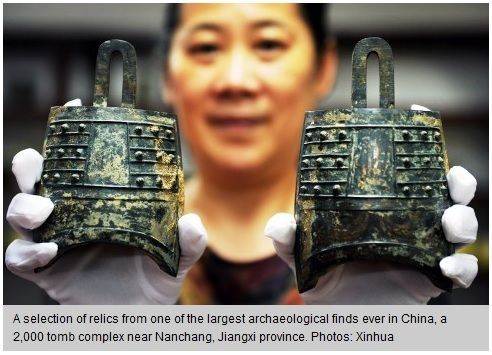|
|
Post by UKarchaeology on Nov 11, 2015 15:22:24 GMT
 Chinese archaeologists working on a royal cemetery dating to the Han dynasty 2,000 years ago say the site is the most complete and well-preserved set of tombs they have unearthed, state media reports. Chinese archaeologists working on a royal cemetery dating to the Han dynasty 2,000 years ago say the site is the most complete and well-preserved set of tombs they have unearthed, state media reports.But a key mystery remains: experts hope a locked coffin in the main mausoleum contains relics – an emperor’s seal perhaps – that could confirm the identity of the ancient occupants, according to Xinhua. The site is large, stretching across 40,000 square metres in a rural area outside of Nanchang city in Jiangxi province. Archaeologists have uncovered eight main tombs and a chariot burial area with walls that run nearly 900 metres. They believe it is the burial site of Liu He – the grandson of Emperor Wu, who was the most influential ruler of the Western Han Dynasty (206BC-AD25) – and Liu’s wife along with a handful of family members. Exact details about the era remain sketchy, but it’s thought Liu had a brief but dramatic stint in power – he assumed the throne but was ousted only to later return and be forced out again. Full story (and many pics!): www.scmp.com/news/china/society/article/1875969/locked-tomb-eastern-china-may-hold-key-fate-little-known-emperor |
|